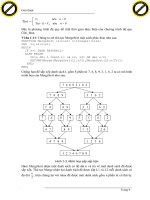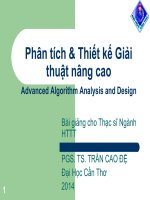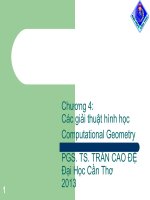Slide phân tích và thiết kế giải thuật chap6 backtracking algorithms
Bạn đang xem bản rút gọn của tài liệu. Xem và tải ngay bản đầy đủ của tài liệu tại đây (1.34 MB, 43 trang )
��������������������������������������������������������������������������������������������������������������������������������������������������������������������������������������������������������������������������������������������������������������������������������������������������������������������������������������������������������������������������������������������������������������������������������������������������������������������������������������������������������������������������������������������������������������������������������������������������������������������������������������������������������������������������������������������������������������������������������������������������������������������������������������������������������������������������������������������������������������������������������������������������������������������������������������������������������������������������������������������������������������������������������������������������������������������������������������������������������������������������������������������������������������������������������������������������������������������������������������������������������������������������������������������������������������������������������������������������������������������������������������������������������������������������������������������������������������������������������������������������������������������������������������������������������������������������������������������������������������������������������������������������������������������������������������������������������������������������������������������������������������������������������������������������������������������������������������������������������������������������������������������������������������������������������������������������������������������������������������������������������������������������������������������������������������������������������������������������������������������������������������������������������������������������������������������������������������������������������������������������������������������������������������������������������������������������������������������������������������������������������������������������������������������������������������������������������������������������������������������������������������������������������������������������������������������������������������������������������������������������������������������������������������������������������������������������������������������������������������������������������������������������������������������������������������������������������������������������������������������������������������������������������������������������������������������������������������������������������������������������������������������������������������������������������������������������������������������������������������������������������������������������������������������������������������������������������������������������������������������������������������������������������������������������������������������������������������������������������������������������������������������������������������������������������������������������������������������������������������������������������������������������������������������������������������������������������������������������������������������������������������������������������������������������������������������������������������������������������������������������������������������������������������������������������������������������������������������������������������������������������������������������������������������������������������������������������������������������������������������������������������������������������������������������������������������������������������������������������������������������������������������������������������������������������������������������������������������������������������������������������������������������������������������������������������������������������������������������������������������������������������������������������������������������������������������������������������������������������������������������������������������������������������������������������������������������������������������������������������������������������������������������������������������������������������������������������������������������������������������������������������������������������������������������������������������������������������������������������������������������������������������������������������������������������������������������������������������������������������������������������������������������������������������������������������������������������������������������������������������������������������������������������������������������������������������������������������������������������������������������������������������������������������������������������������������������������������������������������������������������������������������������������������������������������������������������������������������������������������������������������������������������������������������������������������������������������������������������������������������������������������������������������������������������������������������������������������������������������������������������������������������������������������������������������������������������������������������������������������������������������������������������������������������������������������������������������������������������������������������������������������������������������������������������������������������������������������������������������������������������������������������������������������������������������������������������������������������������������������������������������������������������������������������������������������������������������������������������������������������������������������������������������������������������������������������������������������������������������������������������������������������������������������������������������������������������������������������������������������������������������������������������������������������������������������������������������������������������������������������������������������������������������������������������������������������������������������������������������������������������������������������������������������������������������������������������������������������������������������������������������������������������������������������������������������������������������������������������������������������������������������������������������������������������������������������������������������������������������������������������������������������������������������������������������������������������������������������������������������������������������������������������������������������������������������������������������������������������������������������������������������������������������������������������������������������������������������������������������������������������������������������������������������������������������������������������������������������������������������������������������������������������������������������������������������������������������������������������������������������������������������������������������������������������������������������������������������������������������������������������������������������������������������������������������������������������������������������������������������������������������������������������������������������������������������������������������������������������������������������������������������������������������������������������������������������������������������������������������������������������������������������������������������������������������������������������������������������������������������������������������������������������������j ) are constant.
cu
u
du
o
ng
th
an
Given these data, the statement setqueen is refined as:
x[i]:=j; a[j]:=false; b[i+j]:=false;c[i-j]:=false;
The statement removequeen is refined as:
a[j] = true; b[i+j] = true ; c[i-j] := true
The condition safe is represented as:
a[j] ∧ b[i+j] ∧ c[i-j]
18
CuuDuongThanCong.com
/>
u=x+y
2
7
16
.c
om
y
ng
1
an
co
2
th
3
ng
4
du
o
5
cu
u
6
7
x
8
1
2
3
-7
4
5
6
CuuDuongThanCong.com
7
-3
8
v=x-y
3
5
7
/>
19
cu
u
du
o
an
co
ng
.c
om
begin
x[i]:=j;
a[j]:=false; b[i+j]:=false;
c[i-j]:=false;
if i<8 then
begin
try (i+1, q);
if ¬ q then
begin
a[j]:=true; b[i+j]:=true;
c[i-j]:=true
end
end
else q:=true
end
until q ∨ (j=8)
end {try};
th
ng
program eightqueeen1(output);
{find one solution to eight queens
problem}
var
i : integer; q: boolean;
a : array [1..8] of boolean;
b : array [2..16] of boolean;
c : array [–7..7] of boolean;
x : array [1..8] of integer;
procedure try(i: integer; var q:
boolean);
var j: integer;
begin
j:=0;
repeat
j:=j+1; q:=false;
if a[j] ∧ b[i+j] ∧ c[i-j] then
20
CuuDuongThanCong.com
/>
.c
om
ng
co
u
du
o
ng
th
an
begin
for i:= 1 to 8 do a[i]:=true;
for i:= 2 to 16 do b[i]:=true;
for i:= –7 to 7 do c[i]:=true;
try (1,q);
if q then
for i:=1 to 8 do
write (x[i]);
writeln;
end
cu
A computed solution for 8 queens problem is shown in the
following figure:
21
CuuDuongThanCong.com
/>
H
H
4
7
an
H
th
ng
du
o
H
H
u
6
H
cu
5
H
ng
3
co
2
.c
om
1
H
8
22
CuuDuongThanCong.com
/>
Extension: Finding all solutions
.c
om
The extension is to find not only one, but all solutions
to the posed problem.
th
an
co
ng
Method: Once a solution is found and recorded, we
proceed to the next candidate delivered by the
systematic selection process.
cu
u
du
o
ng
The general schema is derived from (6.3.4) and shown
as follows:
23
CuuDuongThanCong.com
/>
cu
u
du
o
ng
th
an
co
ng
.c
om
procedure try(i: integer);
var k: integer;
begin
for k:=1 to m do
begin
select k-th candidate;
if acceptable then
begin
record it;
if i
end
end
end
24
CuuDuongThanCong.com
/>
In the extended algorithm, to simplify the stopping condition of the
cu
u
du
o
an
co
ng
procedure try (i:integer);
var j: integer;
begin
for j:=1 to 8 do
if a[j] ∧ b[i+j] ∧ c[i-j] then
begin
x[i]:=j;
a[j]:=false; b[i+j]:= false;
c[i-j]:=false;
if i < 8 then try(i+1) else print;
a[j]:=true; b[i+j]:= true;
c[i-j]:= true;
end
end {try};
th
ng
program eightqueens(output);
var i: integer;
a: array [1.. 8] of boolean;
b: array [2.. 16] of boolean;
c: array [–7.. 7] of boolean;
x: array [1.. 8] of integer;
procedure print;
var k : integer;
begin
for k : 1 to 8 do write(x[k]);
writeln;
end {print};
.c
om
selection process, the repeat statement is replaced by a for statement.
25
CuuDuongThanCong.com
/>
.c
om
ng
th
an
co
begin
for i:= 1 to 8 do a[i]:=true;
for i:= 2 to 16 do b[i]:=true;
for i:= –7 to 7 do c[i]:=true;
try(1);
end.
du
o
ng
The extended algorithm gives all 92 solutions for the 8
queens problem.
cu
u
Actually, there are only 12 significantly different
solutions.
26
CuuDuongThanCong.com
/>
The 12 solutions generated are listed in the following table:
cu
u
du
o
ng
th
an
co
ng
.c
om
x1
x2
x3
x4
x5
x6
x7
x8
N
=========================================================
1
5
8
6
3
7
2
4
876
1
6
8
3
7
4
2
5
264
1
7
4
6
8
2
5
3
200
1
7
5
8
2
4
6
3
136
2
4
6
8
3
1
7
5
504
2
5
7
1
3
8
6
4
400
2
5
7
4
1
8
6
3
72
2
6
1
7
4
8
3
5
280
2
6
8
3
1
4
7
5
240
2
7
3
6
8
5
1
4
264
2
7
5
8
1
4
6
3
160
2
8
6
1
3
5
7
4
336
The numbers N to the right indicate the frequency of execution
of the test for safe fields. Its average over all 92 solutions is 161.
27
CuuDuongThanCong.com
/>
State space tree
To illustrate the working of backtracking algorithm, we
construct a tree structure which records the executed
selections. This tree structure is called state space tree
or search tree.
The root node of the tree represents the original state
before the start of the search process.
The nodes in the first level represents the selections
corresponding to the first component of the solution.
The nodes in the second level represents the selections
corresponding to the second component of the solution,
and so on.
co
an
th
ng
du
o
u
cu
ng
.c
om
28
CuuDuongThanCong.com
/>
cu
u
du
o
ng
th
an
co
ng
.c
om
A node in the state space tree is called promising if it
corresponds to the partial solution which can lead to a
complete solution; otherwise, it is called a non-promising
solution.
Leaf nodes represent the dead-end situations or a
complete solution.
Example: Given the following problem:
Set of variables: X, Y, Z.
Let assign values from the set of values {1,2} to the
variables such that the assignment satisfies the following
constraints: X = Y, X ≠ Z, Y > Z.
Solve this problem by backtracking algorithm.
The state-space tree for this problem is given in the
following figure:
29
CuuDuongThanCong.com
/>
X =2
.c
om
X =1
Y=2
ng
Y=1
co
Y=1
×
du
o
Z =2
×
Z=2
Z=1
cu
u
Z =1
ng
th
an
Y=2
×
×
Figure 6.9 An example of state space tree
Solution
×
30
CuuDuongThanCong.com
/>
Complexity of backtracking algorithm
.c
om
Computational time of a backtracking algorithm is always
exponential.
an
co
ng
If each node in the state space tree has α children in
average, and the length of the solution path is N, then the
total number of nodes in the tree is computed as
ng
th
1 + α1 + α2 + …+ αN = (αN+1 -1)/(α-1)
cu
u
du
o
When N is large enough, (αN+1 -1)/(α-1) is approximately
equal to αN . Since time complexity of backtracking
algorithm is proportional to the number of nodes in the
state space tree, the time complexity of this algorithm is
proportional to αN .
31
CuuDuongThanCong.com
/>
Branch-and-bound algorithm
Traveling Salesman Problem (TSP): Given a set of N cities,
find the shortest route connecting them all, with no city visited
twice.
ng
.c
om
ng
th
an
co
This brings to mind another problem: given an undirected
graph, is there any way to connect all the node with a simple
cycle. This is known as Hamilton cycle problem (HCP).
cu
u
du
o
To solve the problem HCP, we can modify the depth-firstsearch (DFS) algorithm to generate all simple paths which visit
all vertices in the graph.
32
CuuDuongThanCong.com
/>
Exhaustive search: Modified DFS to generate all the simple
.c
om
paths
cu
u
du
o
ng
co
an
th
procedure visit( k: integer);
var t: integer;
begin
id := id +1; val[k]:= id;
for t:= 1 to V do
if a[k, t] then
if val[t]= 0 then visit(t);
id := id –1; val[k] := 0
end;
ng
We need modify the procedure visit as follows:
This recursive procedure
can generate all simple
paths from a starting
vertex.
Example:
id :=0;
for k:= 1 to V do val[k]:=0;
visit(1);
33
CuuDuongThanCong.com
/>
cu
u
du
o
ng
th
an
co
ng
.c
om
An instance of TSP
Figure 5.10
34
CuuDuongThanCong.com
/>
cu
u
du
o
ng
th
an
co
ng
.c
om
Exhaustive search to find all simple paths
Figure 5.11
35
CuuDuongThanCong.com
/>
ng
AFDBCELMJKIHG
A G H I K J M L E C B D F and two cycles are in fact the
same.
u
The algorithm for finding Halmiton cycle can be
modified to solve the TSP problem by keeping track
of the cost of the current path and searching for the
path with smallest cost among the found Hamilton
cycles.
cu
du
o
ng
co
an
We can make the visit procedure above test for the
existence of Hamilton cycle by having it test whether
there is an edge from k to 1 when val[k]=V.
In the example above, there are 2 Hamilton cycles
th
.c
om
From the algorithm generating all simple
paths to the algorithm solving TSP
36
CuuDuongThanCong.com
/>
The idea of branch-and-bound
an
co
ng
.c
om
When applying a modified DFS algorithm to generate all
simple paths, in searching the best path for TSP problem,
there is an important pruning technique: we terminate the
search as soon as it is determined that it can’t possibly be
successful.
cu
u
du
o
ng
th
Suppose a path of cost x through the graph has been found.
Then it is fruitless to continue along any path for which the
cost so far is greater than x. This can be implemented simply
by making no recursive calls in visit if the cost of the current
partial path is greater than the cost of the best full path found
so far.
37
CuuDuongThanCong.com
/>
The idea of branch-and-bound (cont.)
.c
om
We clearly cannot miss the minimum-cost path by adhering
to such a policy.
an
co
ng
The technique of calculating bounds on partial solutions in
order to limit the number of full solutions needing to be
examined is called branch-and-bound.
cu
u
du
o
ng
th
This algorithm applies whenever costs are attached to paths
and we are trying to minimize costs.
38
CuuDuongThanCong.com
/>
cu
u
du
o
ng
th
an
co
ng
.c
om
Example: Given a Traveling Salesman Problem as in
the figure:
The working of branch-and-bound for solving this TSP problem is
described in the two following figures.
39
CuuDuongThanCong.com
/>
.c
om
ng
co
an
th
ng
du
o
u
cu
40
CuuDuongThanCong.com
/>
.c
om
ng
co
an
th
ng
du
o
u
cu
41
CuuDuongThanCong.com
/>
.c
om
co
ng
du
o
In fact, the two optimal solutions are the
same.
The cost of the optimal tour: 19
u
an
acbeda
adebca
th
ng
After applying branch-and-bound algorithm,
we obtain two optimal solutions:
cu
42
CuuDuongThanCong.com
/>









